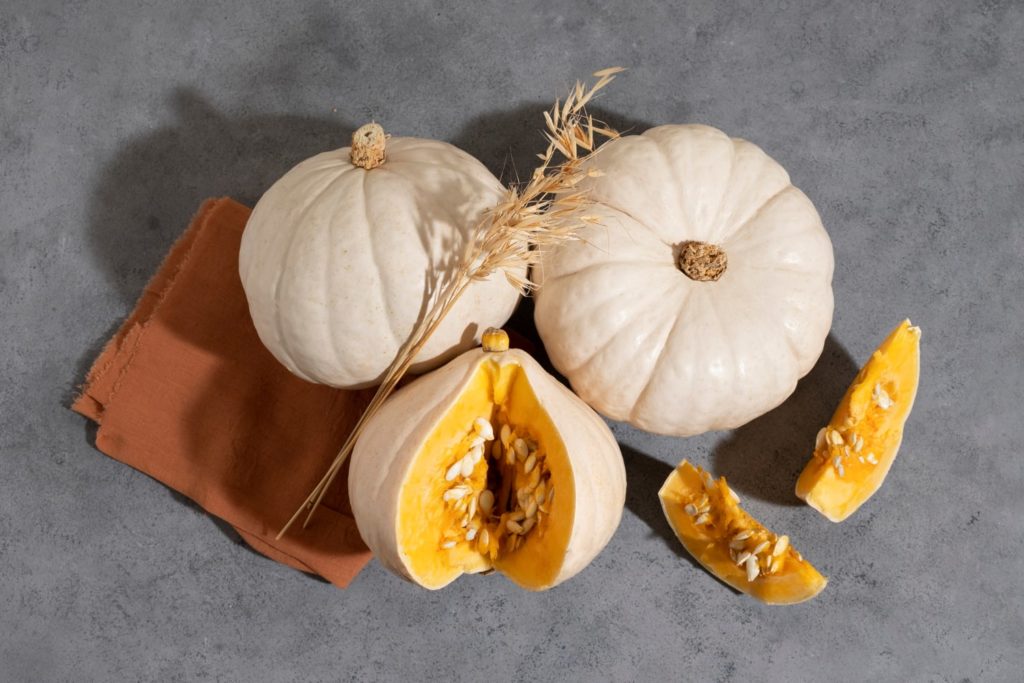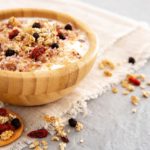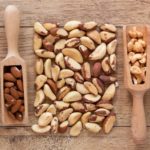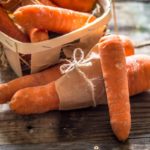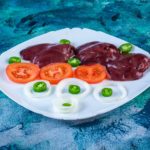
Bernadeth Atrinindarti
MAppSc (Advanced Nutrition Practice)
In this article we will look more closely into flaxseed, garlic, kale and a few other vegetables, and see what the current studies have to say about their anti-cancer and anti-tumour properties.
Flaxseed
Flaxseed, also known as linseed, is one of the oldest crops grown worldwide and it is derived from the flax plant which belongs to the species Linum usitatissimum L., meaning “very useful”.
Flaxseed has been recognised as a valuable source of nutrients and bioactive compounds, including proteins that possess various health benefits.
Recent studies have shown that flaxseed proteins, including albumins, globulins, glutelin and prolamins, possess anti-cancer properties.
Flaxseed stands out as a significant dietary source of lignans, a type of phytoestrogen recognised for its anti-cancer attributes.
Flaxseed is rich in Omega-3 fatty acids
Lignans have been found to inhibit the growth of hormone-sensitive cancers, such as breast and prostate cancers, by interfering with the effects of estrogen on these tissues.
Additionally, flaxseed offers an abundant supply of alpha-linolenic acid, which is an omega-3 fatty acid. Omega-3 fatty acids are known for their anti-inflammatory effects, potentially reducing cancer risk.
Moreover, there is a speculation that omega-3 fatty acids could hinder or limit the proliferation and dissemination of certain types of cancer cells.
The rich antioxidant content in flaxseed contributes to cellular protection against damage induced by free radicals. Certain studies have even indicated that flaxseed proteins might possess anti-angiogenic properties, preventing the formation of new blood vessels essential for tumour growth.[1]
A study by Truan et al., reported that flaxseed oil reduced tumour size and tumour cell proliferation and increased apoptosis. The result showed that flaxseed oil
- reduced tumour size up to 33%
- tumour cell proliferation 38%
- increased cell apoptosis to 110%
The study was conducted in mice with established human breast tumour cell lines (MCF-7). These mice were fed a basal diet (control) or basal diet supplemented with flaxseed oil (40 g/kg) for 8 weeks.[2]
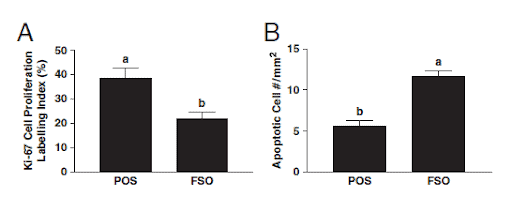
Another study focused on the effect of the flaxseed diet on human breast cancer in a mice model. Mice were divided into two diet groups, one with basal diet and the other one basal diet supplemented with 10% flaxseed.
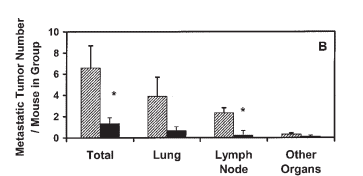
Results showed a significant reduction in tumour growth rate to 45% in total incidence of metastasis in the flaxseed group.[3]
Garlic
Garlic, Allium sativum L. possesses numerous pharmacological potential, including being
- Antibacterial
- Antiarthritic
- Antithrombotic
- Anticancer
- Hypoglycemic
- Hypolipidemic
The anticancer action of garlic is likely the best researched of the many advantageous pharmacological effects, and its use offers significant protection against the risk of developing cancer.
Garlic derivatives including diallyl disulfide are found to be highly effective in suppressing the growth of breast cancer cells.
In recent years numerous bioactive compounds have been identified in garlic including:
- Polyphenols
- Flavanols
- Flavonoids
- Saponins
- Tannins
- Sulfur-containing compounds (such as alliin, ajoene, allicin, DATS, allylpropyl disulfide, S-allylcysteine (SAC), vinyldithiins, poly-saccharides)
Allicin is the main sulfur containing active compound, and it produces a large number of allyl sulfur compounds that are oil-soluble and have anticancer properties.
The sulfur compounds in garlic are both fat and water-soluble and demonstrate anticancer effects by
- reducing oxidative stress
- metabolizing carcinogens
- boosting immune response[4]
A study by Petrovic et al., examined the effects of a simple homemade ethanol-based garlic extract (GE) in several different cancer cells including multiple myeloma and prostate cancer cells.
The study found homemade GE to reduce the cell viability of the two multiple myeloma (RPMI-8226 and JJN3), as well as the prostate cancer cell line DU145 in a dose-dependent manner.[5]
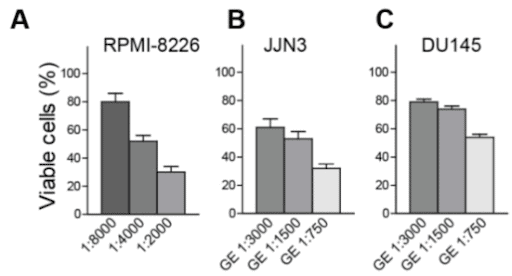
A study by Modem et al., investigated the effect of various dietary products on tumour growth and altered the morphology of breast cancer cell line MCF7.
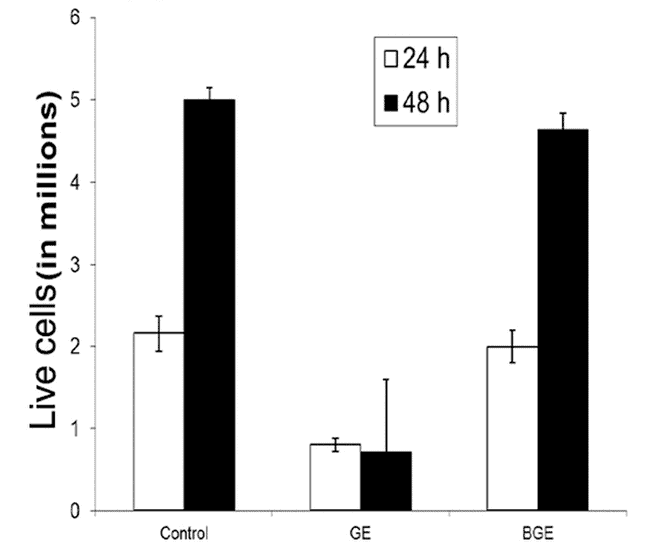
The study showed that a 3-hour exposure to garlic extracts resulted in complete growth arrest and reduced proliferation.
Furthermore, 24-hours post treatment with garlic extract also resulted in cell death up to 15-20%.[6]
Kale
Kale, Brassica oleracea L. var. acephala DC., has an important place in the culinary and diet of the population in Europe, Asia and America.
The health benefit of a Brassica-based diet was recognised from ancient times. They have been used in folk medicine to prevent sunstroke, decrease fevers, soothe sore feet, and relieve croup in children.
Brassica plants have become an interesting research topic recently, due to their bioactive phytochemicals (mostly glucosinolates and polyphenols) linked with different health benefits such as anticancer, antioxidant, anti-inflammatory, and cardioprotective activities.[7]
Brassica plants have anti-inflammatory activities
A study by Rachwal et al. was investigating the effect of red kale (Brassica oleracea L. ssp. acephala L. var. sabellica) extract on human colorectal cancer cells (HT-29).
The result showed that the cell viability of colorectal cancer cells decreased as the colorectal cancer cells were treated with various concentration ranging from 25-250 μg/mL.[8]
Another study observed the antiproliferative effects of fresh and thermal processed green and red cultivars of curly kale.
The results showed that the extracts of both green and red curly kale inhibited the cell proliferation of human colon cancer cell lines (Caco-2. HT-29, and HCT 116). The cells were exposed to various extract concentrations (10, 50, 100 and 150 mg of extract/L).[9]
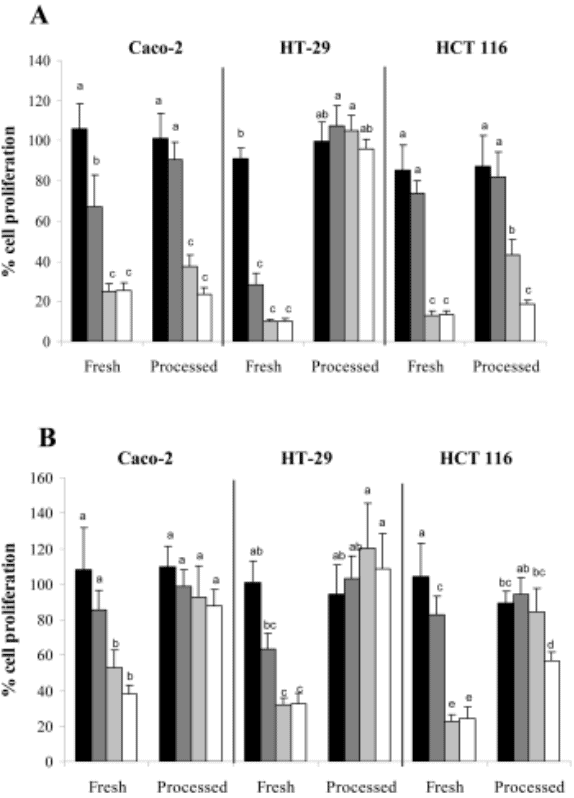
In addition, extracts from fresh plant materials showed a stronger antiproliferative effect than the processed plant materials. The processes include blanching, freeze storage and boil-in-bag heat treatment.[9]
Pumpkin
Pumpkin belongs to Cucurbitaceae which include pumpkin, gourds, melons and squashes. Overall, pumpkin is grown for its fruit and edible seeds.
Cucurbitaceae produce the cucurbitacins, which are responsible for the curative effects. These compounds are the reason for the bitter taste and toxicity of the plants.
Cucurbitacin has been shown to inhibit the growth and proliferation of cancer cells and induce cell cycle arrest and apoptosis in breast cancer cells. Furthermore, it has been demonstrated to reduce metastasis by inhibiting cell migration and invasion in a mouse study of breast cancer.
A study by Medjakovix et al. investigated the bioactivity of a hydro-ethanolic extract of pumpkin seeds from the Styrian pumpkin on the cell viability in prostate cancer cells, breast cancer cells, colorectal adenocarcinoma cells. The result showed a cell growth inhibition of ~40-50% for all cell lines.[10]
A study by Rathinavelu et al. observed the cytotoxic effect of pumpkin seed extracts in LNCaP prostate cancer cell lines.
The cell lines were treated with various concentrations ranging from 20-100 µg/ml for 24 hr.[11]
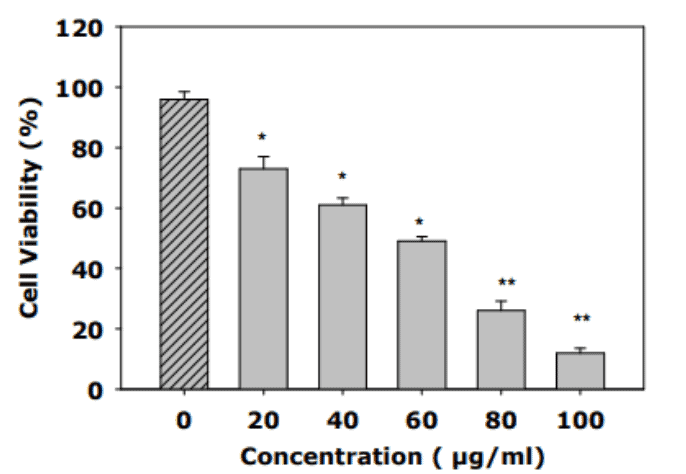
The study showed that pumpkin seed extract significantly reduced the viability of LNCaP cells in a dose dependent manner compared to control.
Soy
Soybean is an important oilseed crop of family Leguminosae and mainly grown for edible seed. It is the most economical source of protein and edible oil for human food.
A study by El-Keiy et al. showed that saponin present in soybean has anti-proliferation activity in mice with colon cancer. The saponin inhibited the proliferation of colon cancer cell lines in a dose-dependent manner after 48 hours treatment.
The proliferation was associated with its apoptosis-inducing effect by activating the caspase-9 enzyme which increased the percent of cell death to 91.02%.[12]
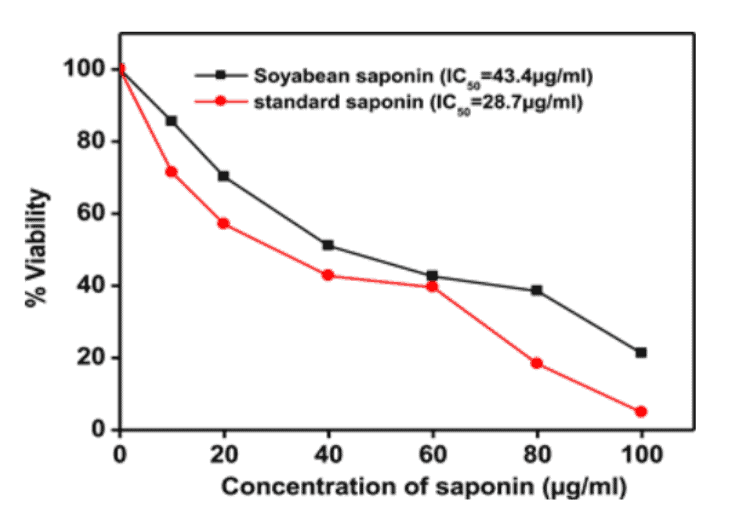
Another study by Wei et al. investigated the association of soy intake with breast cancer risk in over 300,000 women aged 30-79 in China. The average soy intake was 9.4 mg/day soy isoflavones among the Chinese women. After 10 years of follow-up, 2289 women developed breast cancer.
The study found that 10 mg/day of soy isoflavone intake helped reduce risk of breast cancer to 3%. This study also showed that a moderate soy intake was not associated with breast cancer risk. Furthermore, higher soy intake might be beneficial for breast cancer prevention.[13]
If you have just joined us, we suggest reading the first part in this series — Anti-cancer foods: The Healthiest Vegetables (Part 1).
Bernadeth’s passion in cooking, food and health led her to learn more about nutrition and the importance of functional foods. As a nutritionist, Bernadeth’s goal is to encourage a healthy-balanced diet and share the evidence-based nutrition knowledge in order for people to live healthier and longer lives…
If you would like to learn more about Bernadeth, see Expert: Bernadeth Atrinindarti.
References
(1) Jane Muncke, Food Packaging Materials. Retrieved from https://www.foodpackagingforum.org/resources/background-articles/food-packaging-materials
(2) S. Yenidoğan, C. Aydemir, and C. E. Doğan, Packaging-food interaction and chemical migration, Cellulose Chemistry and Technology, vol. 57, no. 9–10, 2023, doi: 10.35812/CelluloseChemTechnol.2023.57.91.
(3) Abdullahi, N. (2014). Hazard chemicals in some food packaging materials (a review). Annals. Food Science and Technology, 15(1).
(4) Paper Papers. 5 Crucial Advantages and Disadvantages of Paper Packaging. Retrieved from https://www.paperpapers.com/news/disadvantages-of-paper-packaging
(5) I. S. Arvanitoyannis and K. V. Kotsanopoulos, Migration Phenomenon in Food Packaging. Food-Package Interactions, Mechanisms, Types of Migrants, Testing and Relative Legislation-A Review’, 2014. doi: 10.1007/s11947-013-1106-8.
(6) Jadhav, E. B., Sankhla, M. S., Bhat, R. A., & Bhagat, D. S. (2021). Microplastics from food packaging: An overview of human consumption, health threats, and alternative solutions. In Environmental Nanotechnology, Monitoring and Management (Vol. 16).https://doi.org/10.1016/j.enmm.2021.100608
(7) Kadac-Czapska, K., Knez, E., Gierszewska, M., Olewnik-Kruszkowska, E., & Grembecka, M. (2023). Microplastics Derived from Food Packaging Waste—Their Origin and Health Risks. In Materials (Vol. 16, Issue 2). https://doi.org/10.3390/ma16020674
(8) Deshwal, G. K., Panjagari, N. R., & Alam, T. (2019). An overview of paper and paper based food packaging materials: health safety and environmental concerns. In Journal of Food Science and Technology (Vol. 56, Issue 10).
(9) Claudio, L. (2012). Our food: Packaging & public health. In Environmental Health Perspectives (Vol. 120, Issue 6). https://doi.org/10.1289/ehp.120-a232
(10) Medjakovic, S., Hobiger, S., Ardjomand-Woelkart, K., Bucar, F., & Jungbauer, A. (2016). Pumpkin seed extract: Cell growth inhibition of hyperplastic and cancer cells, independent of steroid hormone receptors. Fitoterapia, 110, 150-156. doi:https://doi.org/10.1016/j.fitote.2016.03.010
(11) Rathinavelu, A., Levy, A., Dhandayuthapani, S., Murugan, R., Jornadal, J., Quinonez, Y., Gossell-Williams, M. (2013). CYTOTOXIC EFFECT OF PUMPKIN (CURCURBITA PEPO) SEED EXTRACTS IN LNCAP PROSTATE CANCER CELLS IS MEDIATED THROUGH APOPTOSIS. Current Topics in Nutraceutical Research, 11, 137-144.
(12) El-Keiy, M. , Radwan, A. and Mohamed, T. (2019) Cytotoxic Effect of Soy Bean Saponin against Colon Cancer. Journal of Biosciences and Medicines, 7, 70-86. doi: 10.4236/jbm.2019.77006
(13) Wei, Y., Lv, J., Guo, Y., Bian, Z., Gao, M., Du, H., Yang, L., Chen, Y., Zhang, X., Wang, T., Chen, J., Chen, Z., Yu, C., Huo, D., Li, L., & China Kadoorie Biobank Collaborative Group (2020). Soy intake and breast cancer risk: a prospective study of 300,000 Chinese women and a dose-response meta-analysis. European journal of epidemiology, 35(6), 567–578. https://doi.org/10.1007/s10654-019-00585-4

